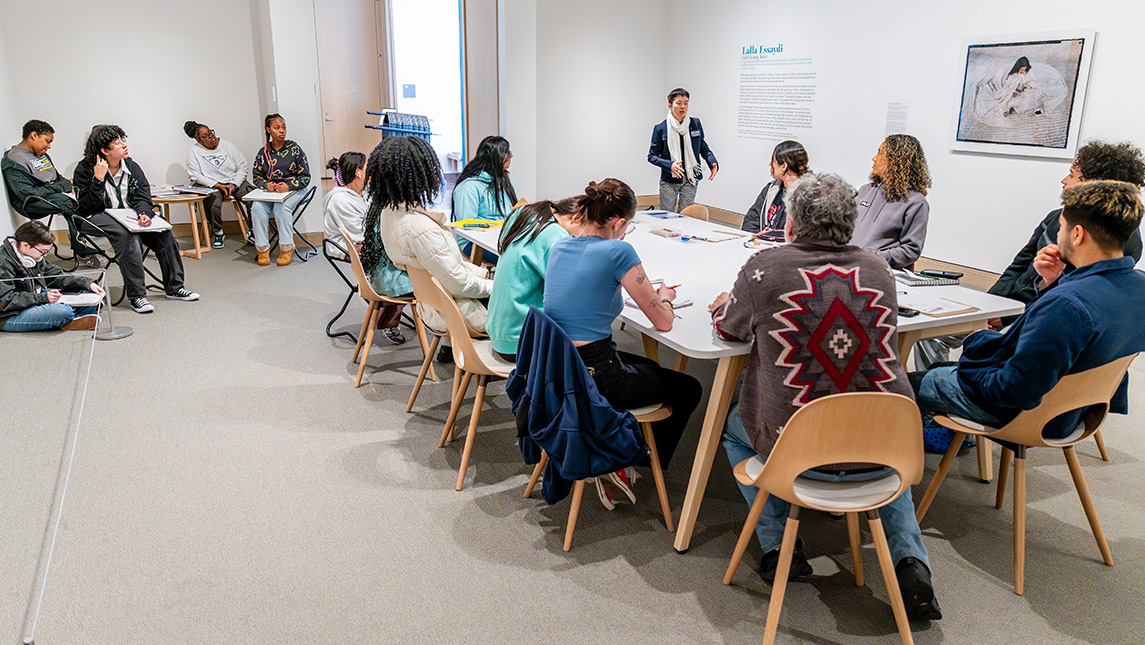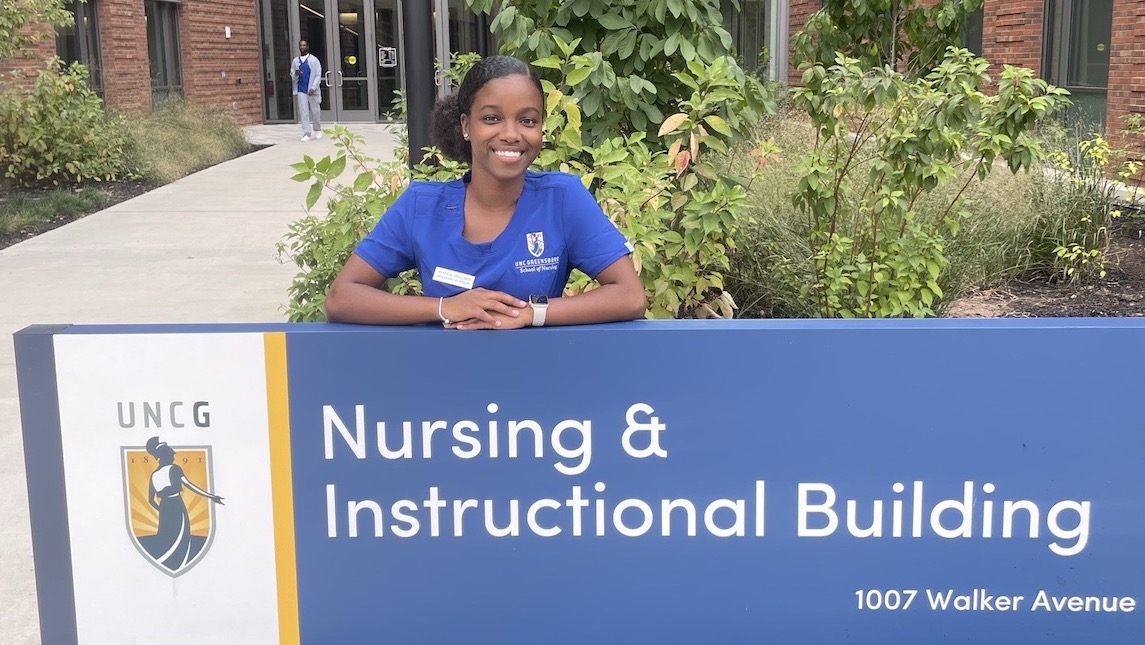The Weatherspoon Art Museum has reopened after a summer of renovations to its galleries and is excited to welcome back visitors to see its current and upcoming exhibitions.
Throughout her teaching career, Dr. Neelofer Qadir has always looked for ways to bring artwork into class discussion.
“Students are familiar with commenting on visuality,” she says. “It gives them another entryway into the topics that may feel very dense in text.”
For Qadir, one of the draws of joining UNC Greensboro’s English department was the access to the Weatherspoon Art Museum. From introductory classes to upper-level coursework and graduate student projects, she helps her students take advantage of this resource a few blocks away from her classrooms.
“It really pervades across my pedagogy to bring students to Weatherspoon,” says Qadir, “They can work with me and with museum staff like Emily Stamey, or they can visit on their own.”

Qadir and other faculty have shown that the Weatherspoon is a springboard for deeper analysis for all academic programs and not just art.
“There’s demand at UNCG for object-based learning across curriculums,” says Dr. Emily Stamey, Elizabeth McIver Weatherspoon Curator of Academic Programming and Head of Exhibitions. “Taking the time to study art objects in person, thinking about an object from different perspectives, trying to place our analysis of the art into other contexts. That is a skill that transfers to every single discipline.”
Tapping a Rich Campus Resource
UNCG faculty can work with any of the 6,600 items in the Weatherspoon’s collection, not just the ones currently on display. Anne and Ben Cone Memorial Endowed Director Juliette Bianco says, “That’s the beauty of a teaching museum. We can pull any of those objects out of storage for a class if a professor requests them.”

Qadir had students in “Introduction to International Global Studies“ choose an item from the Weatherspoon or Library’s Special Collections, then demonstrate how it can tell a global story. “They get the conceptual vocabulary from the class,” says Qadir. “Then they fill that in with additional research, triangulating between the primary source, the secondary sources, and so on.”
A visit to the Weatherspoon is a no-brainer for faculty in the College of Visual and Performing Arts. “If you spend too much time in a classroom, looking at a projector can get stale,” says Rodgers Dameron. “Students need that real-world experience.”
As assistant professor of animation, Dameron took interest in the Disney exhibition. Using the storyboards and cels from 1937’s “Snow White and the Seven Dwarfs” and 1942’s “Bambi,” he showed students how the digital animation tools they use today are based on older techniques. He says, “I think it gave them an appreciation for how much work goes into the older style of animation.”

Dameron says the museum is invaluable to artists. “Thinking back to when I was in school, at a college in Brooklyn, one of the big advantages was literally every week, I would go up to the Met or to Soho’s art galleries.”
Other students have even helped with curation and programming. Former UNCG Assistant Professor of Art History Nicole Scalissi brought students to work with Stamey and curate a collection of early 20th century Mexican prints. Graduate students of dance came up with “Drawn to Dance,” inviting art students to sketch dance students in motion.
Art Cultivates Global Engagement
Dr. Etsuko Kinefuchi, professor of communication studies, followed up on an email from the Weatherspoon inviting faculty to check out its teaching resources. At the time, Wangechi Mutu’s “The End of Eating Everything” was on display. The exhibit explored materialistic lifestyles and consumption. Kinefuchi jumped at the chance to bring her environmental communication class to see it.

Elaine Gustafson, curator of collections and head of facilities, also found relevant artwork in the Weatherspoon’s collection to show Kinefuchi’s class.
Kinefuchi has since incorporated museum visits into other courses. When students return to the classroom, they can apply what they saw to communication concepts about framing, perspective, and emotion. Kinefuchi says, “Art helps us think about different ways we engage with the world, not just the verbal communication which tends to dominate our pedagogical world.”
She says the museum staff do an excellent job of guiding meaningful peer-to-peer discussions. “Emily allowed the students to voice how they perceived things. One student might say, ‘This stood out to me for this reason.’ And another student would say, ‘I didn’t think of that.’ The conversation in that space gives them the ability to see that, ‘Oh, there are other interpretations out there that I should be thinking about.’”
team-ups that Inspire
The Weatherspoon recently created a department dedicated to helping faculty design classes around the museum. They hired Raechel Cook as associate curator of academic programming to help facilitate meaningful art encounters for students.
This summer, the museum completed renovations thanks to a grant from the Helen Frankenthaler Foundation to improve the experience for students, faculty, and all visitors.

Bianco says, “It’s about understanding faculty members’ pedagogical goals or content goals, and also understanding that skill goals – empathy, critical thinking, curiosity, creativity, and problem solving – can also be taught in front of original works of art. Our plan is only to increase the accessibility of the Weatherspoon’s collection in the years ahead.”
Kinefuchi, Qadir, and Dameron hope more faculty at UNCG will look at the Weatherspoon’s offerings. “It’s an incredible resource for students to have,” says Qadir. “It is truly their place.”
“When students are exposed to that quality of art, they gain confidence,” says Dameron. “It raises their own expectations.”
Story by Janet Imrick, University Communications
Photography by Sean Norona, University Communications




